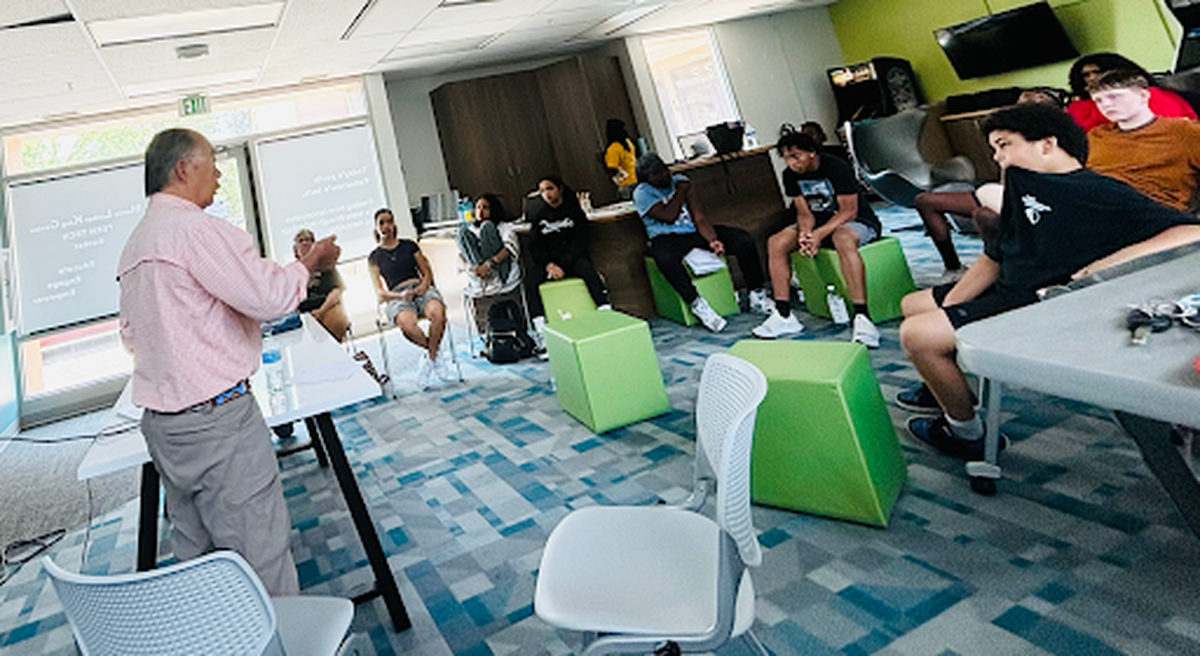The exhibit Imagining Ancestors by Pok Chi Lau, a photographer and documentary artist, though not an anthropologist, has been showcased at various venues in Spokane, with and without presentations. It inspires people to tell their own stories. Lau has been following his people’s travels to more than 40 different countries, learning about his people as he went.
Imagining Ancestors features large diptychs of the Batammariba people of Togo, Africa, holding images of slaves brought to the Americas and the Caribbean, paired with pictures of commodities that accompanied them to the countries of their enslavers. The photographs are vibrant, detailed, and depict the contrast between modern and traditional life, including the unique architecture and facial identity marks.
Pok Chi Lau’s presentations reached diverse audiences including the Martin Luther King Center where Lau spoke to youth aged 15-17, emphasizing the importance of storytelling and documenting one’s own history.
At the Hamilton Studio hundreds of people came to hear music and his photographs provided a background ambience, allowing for a subconscious effect. Also at the studio were a group of African American youth interested in commercial media but who were also exposed to documentary photography and fine art.
At Spokane’s downtown Central Library Lau reached an entirely different audience, including the homeless, tourists, and local workers. This display included intimate portraits of descendants of Chinese immigrants and Afro-Cubans, and highlighted their mixed heritage. Hanging from the ceiling was an eighteen foot long textile printed with cut off hands and fingers representing the maiming of rubber workers who failed to meet rubber production quotas under King Leopold II.
In the many presentations the work should have been put in context of visiting a museum or historical reenactment. One of the sites that Lau photographed, Koutammatou, the land of the Batammariba in Togo, Africa, is a United Nations Educational, Scientific and Cultural Organization World Heritage Site. UNESCO seeks to encourage the identification, protection, and preservation of cultural and natural heritage around the world considered to be of outstanding value to humanity.
Be aware of one story. It is not always what you see, often it is what you’ve seen that determines what’s there. When you look at Pok Chi Lau’s images you see something with your eyes that may challenge the images and stories that have already been imprinted in your memories.
Pok Chi Lau is telling his story and we have to tell our story. You cannot wait until you are ready. If you do, you never will start. Take your cell phones and start telling your story now. No one can do it better than you; and you will learn so much.
For more about Koutammatou visit https://whc.unesco.org/en/list/1140.There are 1,223 World Heritage sites in 168 countries, including sites in Washington State. For the complete list of links to information about these sites visit https://whc.unesco.org/en/list/.
To see more of Pok Chi Lau’s work visit his page at 4comculture.com.
